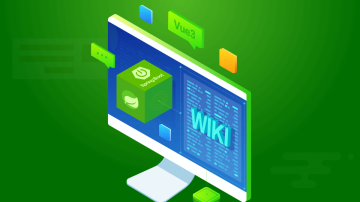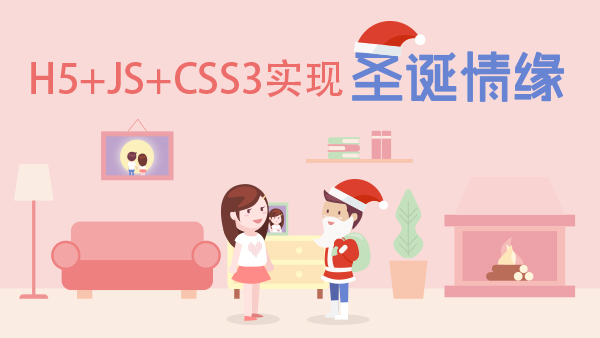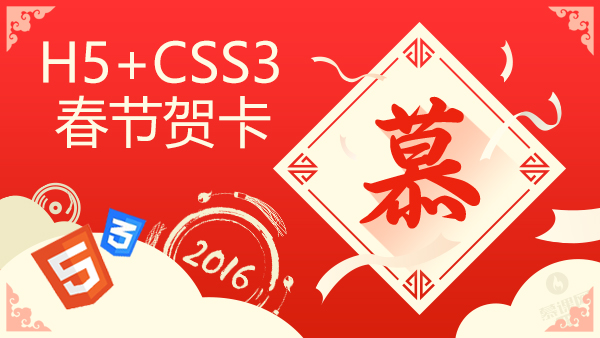1.Widget的第一印象
1.1:初次的见面
首先我们来到第一次看到Widget类的场景,那时还对这个世界一无所知,
进入程序的入口时runApp函数中需要传入一个Widget对象,这便是第一眼。
初始项目中的做法是自定义了一个MyApp类继承自StatelessWidget。
void main()=>runApp(MyApp());
---->[flutter/lib/src/widgets/binding.dart:778]----
void runApp(Widget app) {
WidgetsFlutterBinding.ensureInitialized()
..attachRootWidget(app)
..scheduleWarmUpFrame();
}
class MyApp extends StatelessWidget {
//略...
}
1.2:Widget在源码中的位置
位置:
flutterSDK/packages/flutter/lib/src/widgets/framework.dart:369
首先,它在framework包中,可以说至关重要。其次它继承自DiagnosticableTree
下图可见Widget类在Flutter的框架层中是比较顶尖的类。


你之后就会知道,Widget是Flutter界面的中心,可显示在页面上的一切,都和Widget相关。
1.3:Widget类的构成
首先,Widget是一个抽象类,拥有一个
createElement()的抽象方法返回一个Element对象。
其次,Widget类本身只有一个字段、一个构造方法、一个抽象方法、一个静态方法和两个普通方法。
abstract class Widget extends DiagnosticableTree {
const Widget({ this.key });
final Key key;
@protected
Element createElement();
@override
String toStringShort() {
return key == null ? '$runtimeType' : '$runtimeType-$key';
}
@override
void debugFillProperties(DiagnosticPropertiesBuilder properties) {
super.debugFillProperties(properties);
properties.defaultDiagnosticsTreeStyle = DiagnosticsTreeStyle.dense;
}
static bool canUpdate(Widget oldWidget, Widget newWidget) {
return oldWidget.runtimeType == newWidget.runtimeType
&& oldWidget.key == newWidget.key;
}
}
关于Widget的源码,这里暂时不做解读,随着了解的深入,再去看源码,效果会好很,现在火候还未到,有个大概印象就行了。
2.Widget的状态
2.1:Widget的状态概述
在Widget源码中明显指出了关于Widget状态的问题:
/// Widgets themselves have no mutable state (all their fields must be final).
/// If you wish to associate mutable state with a widget, consider using a
/// [StatefulWidget], which creates a [State] object (via
/// [StatefulWidget.createState]) whenever it is inflated into an element and
/// incorporated into the tree.
Widget的本身没有可变状态(所有字段都必须是final)。
如果您希望将一个widget拥有可变状态,请考虑使用 StatefulWidget,
每当它被加载为元素并合并到渲染树中时,会创建State对象(通过 StatefulWidget.createState)。
对StatefulWidget和StatelessWidget也做了简要的描述
/// * [StatefulWidget] and [State], for widgets that can build differently
/// several times over their lifetime.
/// * [StatelessWidget], for widgets that always build the same way given a
/// particular configuration and ambient state.
StatefulWidget和State,用于可以在其生命周期内多次构建的widget。
StatelessWidget,用于在给定配置和环境的状态的下始终以相同方式构建的widget。
2.2: StatelessWidget 无状态组件
该类的本身非常简洁,由于Widget有一个createElement抽象方法,
StatelessWidget类中通过StatelessElement对象完成了该抽象方法,
所以StatelessWidget只需要关注build这个抽象方法即可。

abstract class StatelessWidget extends Widget {
const StatelessWidget({ Key key }) : super(key: key);
@override
StatelessElement createElement() => StatelessElement(this);
@protected
Widget build(BuildContext context);
如初始项目中,MyApp是继承了StatelessWidget,它的任务在于重写build方法。
class MyApp extends StatelessWidget {
@override
Widget build(BuildContext context) {
return MaterialApp(
title: 'Flutter Demo',
theme: ThemeData(
primarySwatch: Colors.blue,
),
home: MyHomePage(title: 'Flutter Demo Home Page'),
);
}
}
2.3:StatefulWidget有状态组件
该类本身也比较简单,继承自Widget,createElement方法通过StatefulElement实现
所以该类需要注意的只有抽象方法createState(),负责返回一个State状态对象

abstract class StatefulWidget extends Widget {
const StatefulWidget({ Key key }) : super(key: key);
@override
StatefulElement createElement() => StatefulElement(this);
@protected
State createState();
}
初始代码也是用心良苦,为我们准备了一个简单的有状态组件MyHomePage
可以看到,该类的核心是createState方法,返回一个自定义的_MyHomePageState对象
class MyHomePage extends StatefulWidget {
MyHomePage({Key key, this.title}) : super(key: key);
final String title;
@override
_MyHomePageState createState() => _MyHomePageState();
}
2.4:State 对象
比较引人注目的就是State对象中有一个泛型,从源码中来看,
该泛型值接受StatefulWidget,即有状态组件类。
State作为一个抽象类,存在一个build抽象方法来返回一个Widget对象
abstract class State<T extends StatefulWidget> extends Diagnosticable {
//略...
@protected
Widget build(BuildContext context);
}
初始代码中也为我们做了示例:
这里将_counter作为可变状态,通过点按钮改变状态,再通过setState重新渲染,
执行build方法,从而达到了点击按钮数字增加的一个组件,
class _MyHomePageState extends State<MyHomePage> {
int _counter = 0;
void _incrementCounter() {
setState(() {
_counter++;
});
}
@override
Widget build(BuildContext context) {
return Scaffold(
appBar: AppBar(
title: Text(widget.title),
),
//略...
);
}
}
这里需要注意的一点是State类中的widget属性到底是什么,这里通过debug可以看出,就是传入的泛型类,
至于如何widget属性何时赋值以及渲染的,先别急,还有一段很长的路要走。

现在回头看一下,你是否已经对曾经陌生无比的初始项目有了突然熟悉了许多。
蓦然回首,希望这会成为你在一段旅行中美丽的一瞬,也是我这个导游的成功。
3.从Icon源码看StatelessWidget组件
趁人打铁,为了让大家对Widget有更好的理解,这里挑选了两个Widget。
通过源码赏析一下:一个Widget是如何构成的。第一个是无状态家族的Icon组件
3.1:Icon组件的使用
Icon主要有三个属性,分别控制图标,颜色,大小

Icon(
Icons.local_shipping,
color: Colors.pink,
size: 30.0,
)
3.2:Icon源码
从源码中可以看出,Icon类中主要做了四件事:
构造函数–> 声明属性字段–> 实现build方法,返回Widget对象–>debugFillProperties
class Icon extends StatelessWidget {
const Icon(
this.icon, {
Key key,
this.size,
this.color,
this.semanticLabel,
this.textDirection,
}) : super(key: key);
final IconData icon;
final double size;
final Color color;
final String semanticLabel;
final TextDirection textDirection;
@override
Widget build(BuildContext context) {
//暂略...
}
@override
void debugFillProperties(DiagnosticPropertiesBuilder properties) {
//暂略...
}
}
可以看出,构造函数中有一个必须的参数icon,从定义中来看是一个IconData对象
注意:构造函数用const关键字修饰,字段全被修饰为final,这就意味着字段不可再修改。
这也是被称为无状态的原因,一旦对象构建完成,它就样子就无法再被改变。

3.3:build方法
build方法作为StatelessWidget的抽象方法,子类必须去实现
这个方法也将决定一个Widget在界面上的样子,所以它至关重要
从源码中可以看出Icon主要是通过RichText来实现的,核心是text属性
@override
Widget build(BuildContext context) {
//略...
Widget iconWidget = RichText(
overflow: TextOverflow.visible, // Never clip.
textDirection: textDirection, // Since we already fetched it for the assert...
text: TextSpan(
text: String.fromCharCode(icon.codePoint),//文字
style: TextStyle(
inherit: false,
color: iconColor,
fontSize: iconSize,
fontFamily: icon.fontFamily,
package: icon.fontPackage,
),
),
);
if (icon.matchTextDirection) {//做文本方向的处理
switch (textDirection) {
case TextDirection.rtl://文本方向从右到左
iconWidget = Transform(
transform: Matrix4.identity()..scale(-1.0, 1.0, 1.0),
alignment: Alignment.center,
transformHitTests: false,
child: iconWidget,
);
break;
case TextDirection.ltr://文本方向从左到右
break;
}
}
// 暂略...
}
3.4:文字图标的实现
映入眼帘的是
String.fromCharCode()方法,它接受一个int值
这个int值是由IconData对象的codePoint属性提供的,为了方便开发,
Flutter框架给了很多Icon静态常量,当然你也可以使用自定义的图标。
---->[flutter/bin/cache/pkg/sky_engine/lib/core/string.dart:134]----
external factory String.fromCharCode(int charCode);
----[flutter/lib/src/widgets/icon_data.dart:22]----
const IconData(
this.codePoint, {
this.fontFamily,
this.fontPackage,
this.matchTextDirection = false,
});
/// The Unicode code point at which this icon is stored in the icon font.
final int codePoint;
----[flutter/lib/src/widgets/icon_data.dart:22]----
static const IconData local_shipping = IconData(0xe558, fontFamily: 'MaterialIcons');
一个图标实际上就是一个字体,可以根据一个int值和字库名匹配到它。
所以图标才支持变色和改变大小等方便的功能。
3.5:关于Semantics类
还有一点不知你是否注意,最后返回的是一个包裹了iconWidget的Semantics对象
字面上来看,它是语义化的意思,那他有什么用处呢?
return Semantics(
label: semanticLabel,
child: ExcludeSemantics(
child: SizedBox(
width: iconSize,
height: iconSize,
child: Center(
child: iconWidget,
),
),
),
);
Flutter中的MaterialApp有一个
showSemanticsDebugger的属性可以用来查看语义化界面

---->[main.dart:3]----
void main() => runApp(MyApp());
class MyApp extends StatelessWidget {
// This widget is the root of your application.
@override
Widget build(BuildContext context) {
var icon = Icon(
Icons.local_shipping,
color: Colors.pink,
size: 40.0,
semanticLabel: "一个货车图标",
);
var scaffold=Scaffold(
appBar: AppBar(
title: Text('Flutter Demo Home Page'),
),
body:icon,
);
return MaterialApp(
title: 'Flutter Demo',
theme: ThemeData(
primarySwatch: Colors.blue,
),
showSemanticsDebugger: true,
home: scaffold,
);
}
}
好了,这样就是对于一个简单的无状态组件构成的简要介绍。
4.从Checkbox看StatefulWidget组件
4.1:CheckBox的使用
有状态组件很好理解,首先它有一个允许改变的状态量,不如Checkbox就是选中与否
下面的测试代码实现了,点击切换Checkbox选中或未选中的状态
void main() => runApp(MyApp());
class MyApp extends StatelessWidget {
// This widget is the root of your application.
@override
Widget build(BuildContext context) {
var scaffold=Scaffold(
appBar: AppBar(
title: Text('Flutter Demo Home Page'),
),
body:CheckBoxWidget(),
);
return MaterialApp(
title: 'Flutter Demo',
theme: ThemeData(
primarySwatch: Colors.blue,
),
home: scaffold,
);
}
}
class CheckBoxWidget extends StatefulWidget {
@override
_CheckBoxWidgetState createState() => _CheckBoxWidgetState();
}
class _CheckBoxWidgetState extends State<CheckBoxWidget> {
bool _checked=true;//维护CheckBox框状态
@override
Widget build(BuildContext context) {
return
Checkbox(
value: _checked,
activeColor: Colors.blue, //选中时的颜色
onChanged:(value){
setState(() {
_checked=value;
});
} ,
);
}
}
4.2:CheckBox源码简析
下面是Checkbox的代码,继承自StatefulWidget,所以需要实现createState方法
这时,源码中使用自定义的_CheckboxState类来管理状态。
class Checkbox extends StatefulWidget {
const Checkbox({
Key key,
@required this.value,
this.tristate = false,
@required this.onChanged,
this.activeColor,
this.checkColor,
this.materialTapTargetSize,
}) : assert(tristate != null),
assert(tristate || value != null),
super(key: key);
final bool value;//是否选中
final ValueChanged<bool> onChanged;//点击回调
final Color activeColor;//激活态框颜色
final Color checkColor;//激活态对勾颜色
final bool tristate;//三态
final MaterialTapTargetSize materialTapTargetSize;
static const double width = 18.0;
@override
_CheckboxState createState() => _CheckboxState();
}
通过这两个组件源码,可以总结出一些风格特点:
1.构造函数用const修饰,每行写一个属性
2.必须的属性用@required注解
3.非空的属性用assert断言
4.字段全是final类型
_CheckboxState中的build方法返回_CheckboxRenderObjectWidget对象
CheckBox具体绘制逻辑及状态改变,在_RenderCheckbox中实现
---->[flutter/packages/flutter/lib/src/material/checkbox.dart:140]----
class _CheckboxState extends State<Checkbox> with TickerProviderStateMixin {
@override
Widget build(BuildContext context) {
//略...
}
return _CheckboxRenderObjectWidget(
//略...
);
}
}
---->[flutter/packages/flutter/lib/src/material/checkbox.dart:168]----
class _CheckboxRenderObjectWidget extends LeafRenderObjectWidget {
//略...
@override
_RenderCheckbox createRenderObject(BuildContext context) => _RenderCheckbox(
//略...
);
@override
void updateRenderObject(BuildContext context, _RenderCheckbox renderObject) {
//略...
}
4.3:Checkbox核心绘制方法
_RenderCheckbox继承自RenderToggleable,可以重写paint方法
这边简单看一下主要的边框和对勾的绘制方法
// 可以看出画笔的颜色是checkColor,以线条的形式
void _initStrokePaint(Paint paint) {
paint
..color = checkColor
..style = PaintingStyle.stroke
..strokeWidth = _kStrokeWidth;
}
//绘制边线
void _drawBorder(Canvas canvas, RRect outer, double t, Paint paint) {
assert(t >= 0.0 && t <= 0.5);
final double size = outer.width;
// 当t从0.0到1.0时,逐渐填充外部矩形。
final RRect inner = outer.deflate(math.min(size / 2.0, _kStrokeWidth + size * t));
canvas.drawDRRect(outer, inner, paint);
}
//绘制对勾
void _drawCheck(Canvas canvas, Offset origin, double t, Paint paint) {
assert(t >= 0.0 && t <= 1.0);
final Path path = Path();
const Offset start = Offset(_kEdgeSize * 0.15, _kEdgeSize * 0.45);//起始偏移点
const Offset mid = Offset(_kEdgeSize * 0.4, _kEdgeSize * 0.7);//中间偏移点
const Offset end = Offset(_kEdgeSize * 0.85, _kEdgeSize * 0.25);//终止偏移点
if (t < 0.5) {//t<0.5时,绘制短边
final double strokeT = t * 2.0;
final Offset drawMid = Offset.lerp(start, mid, strokeT);
path.moveTo(origin.dx + start.dx, origin.dy + start.dy);
path.lineTo(origin.dx + drawMid.dx, origin.dy + drawMid.dy);
} else {//t>0.5时,绘制长边
final double strokeT = (t - 0.5) * 2.0;
final Offset drawEnd = Offset.lerp(mid, end, strokeT);
path.moveTo(origin.dx + start.dx, origin.dy + start.dy);
path.lineTo(origin.dx + mid.dx, origin.dy + mid.dy);
path.lineTo(origin.dx + drawEnd.dx, origin.dy + drawEnd.dy);
}
canvas.drawPath(path, paint);
}
这样你一个StatefulWidget组件从定义到状态,到绘制的流程应该有所了解


 随时随地看视频
随时随地看视频



